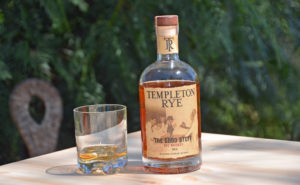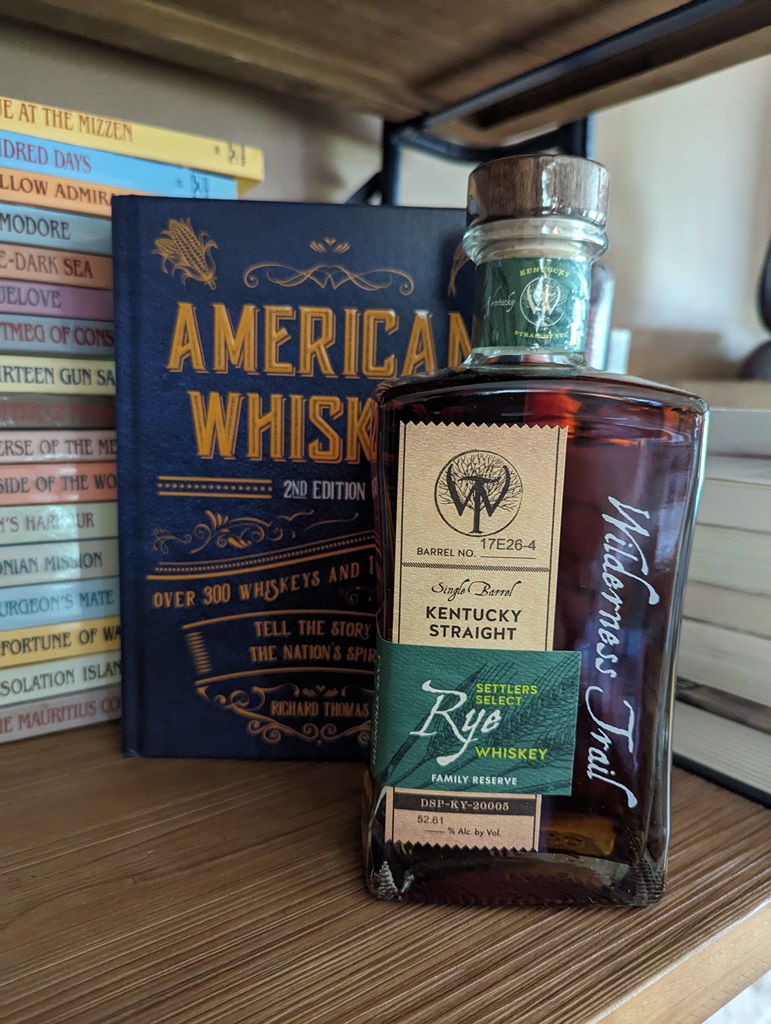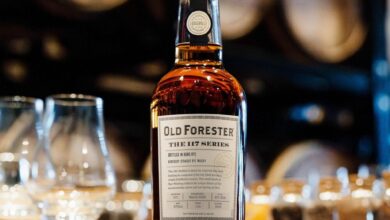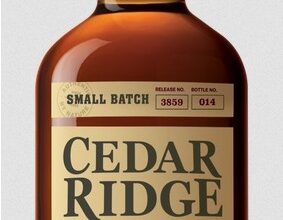The Case Against Templeton Rye
By Richard Thomas

(Credit: Richard Thomas)
In American whiskey circles, few if any companies elicit the same level of suspicion as Templeton Rye. Take the company’s recent marketing exploit in turning their spent mash grain into hog feed to create “whiskey pigs.” The claim was met with a storm of derision in the blogosphere, with some questioning whether the grain in question was even the same as that used in Templeton’s sourced whiskey (it is).
To some, that violent skepticism might seem like an overreaction, but to others Templeton’s “whiskey pigs” gimmick is just another example of the company’s dodgy marketing. After all, there is nothing special about turning spent mash grain into animal feed. Most distilleries in Kentucky and Scotland do it, and have been for decades. Also, the notion that this feed imparts any whiskey flavors to the animal is ridiculous, something I can personally testify to, as I came of age with a toe in Kentucky distilling and a full foot in Bluegrass animal husbandry.
Yet dodgy or not, the “whiskey pigs” were a roaring success for Templeton Rye. Four months later and I still periodically see credulous tales of whiskey-flavored pigs in Iowa appearing in my news alerts. This combination of loose-but-successful marketing is typical of Templeton Rye, and the source from which that aforementioned suspicion flows.
In this first installment of our series on claims against deceptive whiskey practices, The Whiskey Reviewer tackles Templeton Rye. The case against the whiskey company will be assessed in four categories, each analyzed and graded on a four-point scale, similar to the American grade point average. Those separate scores will then be averaged, and a overall grade affixed to the entire case.
The Case
Potemkinism: Conventional wisdom has it that Templeton Rye is the archetype “Potemkin distillery,” meaning they are a bottler that claims to be a distillery. According to the most frequently repeated version of the story, Templeton spent years denying the fact that their whiskey was 95% rye stock from LDI/MGP, the industrial distillery in Indiana, while claiming it was made by them to a bootlegger-era mashbill.
As is usually the case, the conventional wisdom is not entirely accurate. The fact is that Templeton Rye’s origins have been established since at least 2008, and also for at least that long the company has been frank with inquiring journalists and bloggers about where their whiskey comes from (some of them were not as obliging about communicating that information on to their readers).

(Credit: Jake Emen)
The company never flat-out denied the fact that their whiskey was made in Indiana, but instead tried to obscure it behind a veil of stories about the Templeton rye of the 1920s and 1930s. In other words, the official version differs markedly from the sales version of the story. Early versions of the company website avoided the sourcing issue altogether, and current versions still cloud the issue of whether the LDI/MGP whiskey is the sole source of the stock product.
Another part of the usual story that isn’t true is that Templeton isn’t a distillery. They have been making their own juice for several years now, although none of that has found its way into their regular product. (Grade: 4.0 — A+)
Back Story: The case against Templeton Rye raises two historical issues. First is the use of a bootlegger mashbill, as claimed in Templeton Rye’s literature. The company may very well be making a whiskey using such a recipe, but as we have seen, it isn’t the whiskey that comes in Templeton bottles, and they weren’t always particularly upfront about that.
The other historical issue are the allegations made by some that there was never any such thing as genuine, bootleg Templeton rye whiskey, or that if there was any bootlegging in Templeton it was just moonshine. Those claims were false, as anyone who bothered with just a little Googling would have soon discovered. Now there is even a well-researched book on the subject of Templeton, Iowa bootlegging, and yes, Al Capone liked Templeton’s juice. (Grade: 3.0 — B)
Marketing Flim Flam: While not strictly speaking a falsehood, Templeton’s current “whiskey pigs” publicity stunt is certainly an exemplar of very slick marketing. (Grade: 3.3 — B+)
Changed Ways: The problem with Templeton Rye is that they always seem to have two stories. Although they generally admitted to sourcing their whiskey in private, their public story was very different. Those two stories have gradually come closer together over the last several years, but they are still more or less separate. The company could have laid claim to Templeton’s bootlegger heritage without going this route, using only somewhat different language. (Grade: 3.4 — B+)
Overall Case Grade Against Templeton Rye: A-
Summary: Although not free of blemishes, the case against Templeton Rye is a strong one.
Something revealed in the previously cited book, Gentleman Bootleggers, is that the real bootleg Templeton rye was unaged and small barrel whiskey. Although this was not the case when Templeton Rye got started in 2006, many craft distilleries have emerged since that have used a mix of white whiskey, small barrel whiskey, and bottled products to establish their brand name. The sad conclusion that comes from knowing those two things is that it’s not hard to see how the company could have better lived up to its billing. Instead, it has become a stereotype for deceptive whiskey marketing.





Great article. Back in 2010 when I first learned of Templeton rye I was anxious to learn more about it. I found their website and read up on it. Everything in templeton’s press kit led one to believe that there was a distillery in Templeton, IA with a large rye field out back. They grew their own grain, mashed it, distilled it, aged and bottled it right there in this sleepy little town that Al Capone used to love to visit. The recipe was a prohibition recipe also loved by Chicago’s most notorious gangster.
Later that same year I had cause to travel to Des Moines. When I would ask in area liquor stores for Templeton rye I was met with derision, disgust, and loathing. And in these stores the truth came out that, basicly, none of the information on the company website was accurate. Iowa liquor stores had nothing nice to say about these guys as the overwhelming majority of the “good stuff” went to Chicago.
I have NO issues with a company that wants to be an independent bottler. But if you are going to be one, don’t try to be something you are not. Some companies are up front about their sourced whiskies and do it right. High west comes to mind. Even ::whisper:: Diageo has done it right with Bulleit.
It’s real simple. If the blogosphere exposes a potempkin and you don’t like how they do business, don’t buy the product. There are too many others out there.
Iowa Legendary Rye is the original recipe for the rye recipe that made the town of Templeton, Iowa famous during prohibition. What Iowa Legendary Rye makes in Carroll, Iowa is the rye recipe that was preferred by Al Capone. They use sugar in the mash bill which is exactly how Iowa Legendary Rye makes their historically accurate rye.
At this time, I am not an owner in this company; however, I am the grandson of Lorine Sextro who as a matter of fact left behind a handwritten letter outlining her work as a bootlegger for Joe Irlbeck who ran the entire Templeton Rye syndication from 1920 to 1933.
If you want to taste the original recipe, which is exceptional, try Iowa Legendary Rye of Sextro Rye. The black label makes the best old fashioned according to most people who try it. The red label is one of the smoothest sippers you will every experience. The high proof is served in some of the finest restaurants in Las Vegas. The white makes the best bloody Mary I have ever had.
Great start to this series! The public/private difference is one I think you’ll see again and again. Lots of these companies have learned to come clean when questioned by knowledgeable sources, but tell a different story on websites and publications that an unsuspecting consumer would be most likely to check out.
One question, what’s your source for the claim that they are actually distilling? I don’t think I’ve seen any verification of that before. If you got it from them, did they give you any details such as when they actually started distilling, how long it’s been aging, what they plan to do with it, etc.?
Again, a fun read. Thanks.
Sour Mash Manifesto said the same thing about Templeton Rye THREE YEARS AGO. It’s not that remarkable, so relax.
http://sourmashmanifesto.com/2011/10/09/templeton-rye-whiskey-review/
I’d like to see another standard added to the current slate of four: adherence to TTB labeling regulations, which is where most consumers get their only information on the bottle they’re about to buy.
I’m pretty sure Templeton would get a high grade here, too.
Also of interest is Justin’s mention of the derision among retailers in Iowa. I was there last year and nearly every bar owner and consumer I talked with seemed to think that Templeton is an Iowa-distilled product. A lot of breweries there use Templeton barrels to age beers for Iowa authenticity. Go figure.
The thing I find interesting is how even Templeton Rye, probably the worst of the lying lot, has lies told about it! I’ve seen that stuff about how Iowa didn’t even have bootlegging on blogs and forums, and because I thought Templeton was full of crap I believed it. It never entered my head that some people might be lying about the liars.